![]()
![]()
![]()
Use LEFT and RIGHT arrow keys to navigate between flashcards;
Use UP and DOWN arrow keys to flip the card;
H to show hint;
A reads text to speech;
46 Cards in this Set
- Front
- Back
|
voltage clamp method |
1. capable of resolving the aggregate current resulting from flow of ions through thousands of channels 2. does not have sensitivity to measure flow of current via a single channel |
|
|
voltage clamp method mechansim |
1. voltage clamp amplifier (from command) 2. measure current 3. current passes through electrode 4. compared to reference electrode 5. measures Vm |
|
|
what have we learned from voltage-clamp experiments? |
1. membrane channels have to be able to allow ions to move across the membrane at high rates 2. currents depend on electrochemical gradient across membrane 3. Na and K ions flow across membrane independently of each, different channel types have to be able to discriminate between the ions and allow only one type to pass 4. ionic conductances are voltage-dependent, channels have to sense voltage changes and open only at appropriate levels |
|
|
types of patch clamp recordings |
1. whole cell recordings 2. cell-attached recordings 3. inside-out recordigns |
|
|
whole cell recording |
1. patch clamp method 2. membrane patch disrupted briefly by applying strong suction 3. interior or pipet is continuous with cytoplasm 4. allows measurements of electrical potentials and currents from the whole cell |
|
|
patch clamp method |
1. glass pipet makes tight contact with a small patch of the neuronal membrane 2. suction applied to seal pipette and membrane together 3. disallows the flow of ions in this space 4. all the current flows when a single ion channel opens must flow into the pipette and recorded |
|
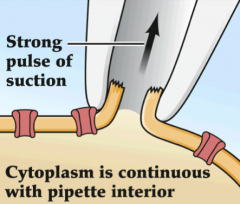
|
whole cell recording |
|
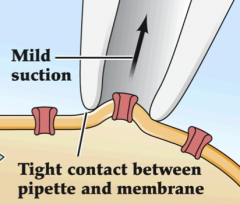
|
cell attached recording |
|
|
cell attached recording |
1. small piece of the membrane can be pulled away without disrupting seal 2. allows study of single channel without complications due to the rest of the cell 3. possible to change the medium to which intracellular surface is exposed |
|
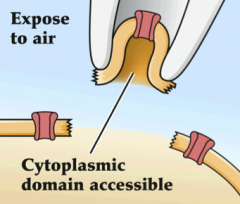
|
inside-out recording |
|
|
what does patch clamp measure? |
measurements of single Na channels |
|
|
microscopic currents |
1. small inward currents 2. caused by depolarization 3. much smaller than macroscopic currents 4. result of the flow of thousands of ions per milisecond |
|
|
macroscopic currents |
obtained by voltage clamping an entire axon |
|

|
microscopic Na+ channels |
|
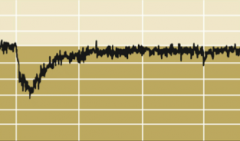
|
macroscopic Na+ channels |
|
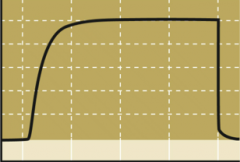
|
macroscopic K+ channels |
|

|
microscopic K+ channels |
|
|
ion channel selectivity |
1. detect differences between Na+ and K+ 2. voltage-gated 3. contain voltage sensors 4. depolarization increases opening 5. hyperpolarization closes channel |
|
|
voltage sensor |
1. present in both Na and K channels 2. detects membrane potential 3. formed by 4 transmembrane structures 4. found in each voltage-gated K+ cahnnel 5. separate domains that extend into the membrane 6. positively charged - allow movement IN membrane 7. depolarization pushes sensors outwards 8. hyperpolarization pushes sensors inwards 9. paddle like movement (open v close) |
|

|
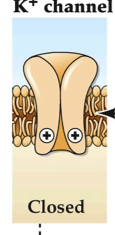
|
|
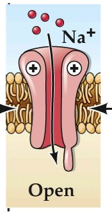
|
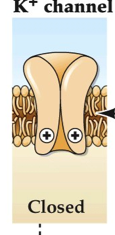
|
|

|
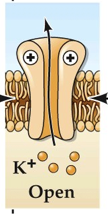
|
|

|
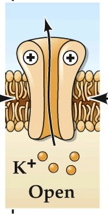
|
|

ADD TTX |

|
|
|
SCN genes |
1. 10 known genes 2. encode for different types of Na channesl |
|
|
Ca++ channesl |
1. more than 10 different genes encode for Ca channels 2. varied functions 3. release of NT at synapse |
|
|
K+ channels |
1. over 100 known genes encode for K channels 2. differ inactivation, gating, and inactivation |
|
|
Ligand-gated ion channels |
1. respond to chemical signals (ligands) instead of changes in membrane potential 2. less selective than voltage-gated channels 3. allow more than one type of ion to flow |
|
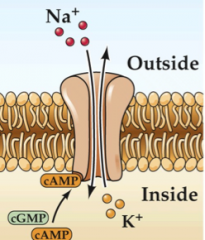
|
cyclic nucleotide gated ligand-gated channel |
|

|
Ca+2 activated K+ ligand-gated channel |
|
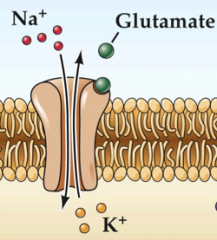
|
NT receptors |
|
|
structure of channels |
1. four subunits are assembled together to form a channel 2. channel pore located in the center of the channel 3. narrowest part is near the outside of the channel 4. constricted so that only non hydrated K+ can pass 5. selectivity filter |
|
|
channel pore |
1. located in the center of the channel 2. narrow tunnel that allows K+ to flow through 3. formed by poor loops of each subunit
|
|
|
selectivity filter |
1. found in channels 2. filter ions based on charge and size |
|
|
depolarization pushes voltage sensors ______ |
outwards |
|
|
hyperpolarization pushes voltage sensors ______ |
inwards |
|
|
Tarantula toxin: strong binding |
resting voltage sensors |
|
|
Tarantula toxin: weak binding |
active voltage sensors |
|
|
active transporters |
1. function to maintain concentration gradients 2. facilitate ion translocation 3. ex: ATPases, ion exchanges, co-transporters |
|
|
ion translocation |
1. via active transporters 2. takes several milliseconds 3. much slower than channels
|
|
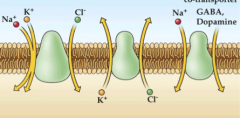
|
co-transporters |
|
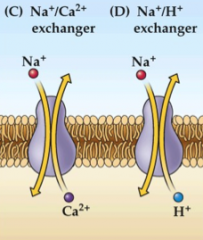
|
ion exchangers |
|
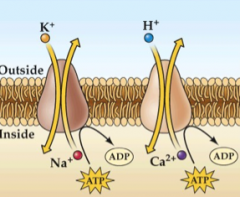
|
ATPase pumps |
|
|
Na+/K+ ATPase pump |
1. 2 K+ into cell for 3 Na+ out (must bind both) 2. net charge produced (+1 out) = electrogenic 3. charge produced is small relative to voltage-gated channels because transporters are slow 4. must have sites to bind ATP and receive phosphate 5. must bind ouabain
|
|
|
Na+/K+ ATPase pump mechanism |
1. Na+ binding ATP --> ADP 2. phosphorylation 3. conformational change: Na release and K binding dephosphorylation 4. conformational change: K+ release |
|
|
ouabin |
toxin that pumps Na/K ATPase pump |

